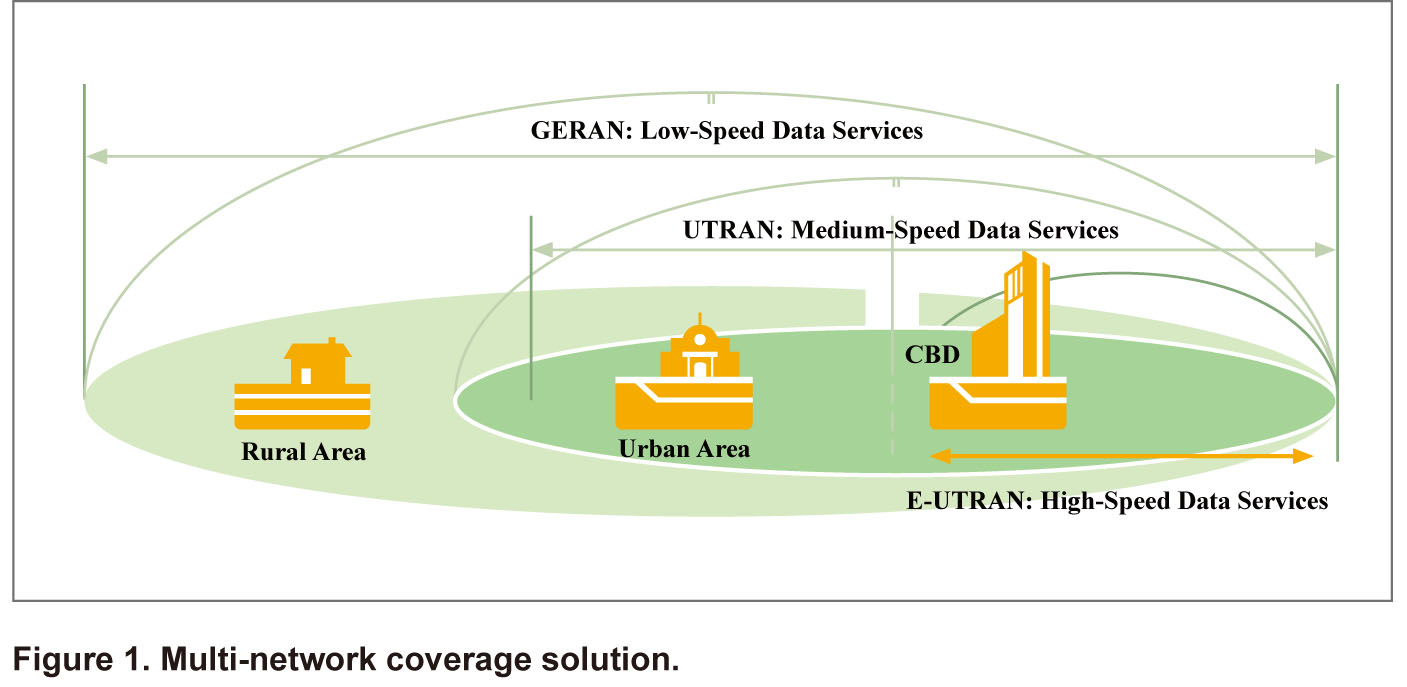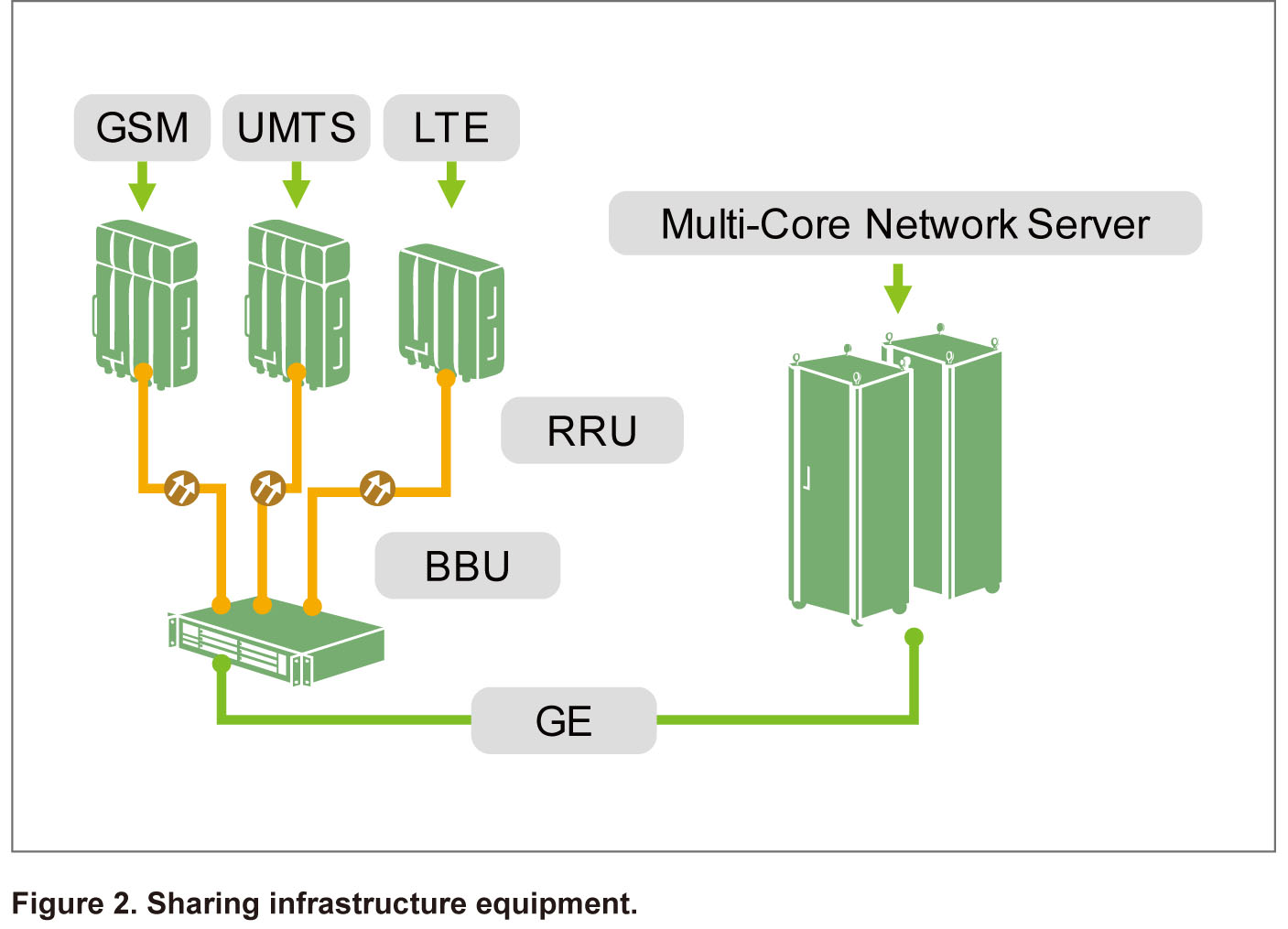Moving Towards Multi-System Interoperability
Multi-System Coexistence
The story of “four generations under one roof” has been played out before in the automobile industry. If a car company could develop differentiated strategies, its multi-generation cars would not compete against each other but rather complement each other.
The same can be said of the mobile communications industry. Three generations of mobile technologies—2G, 3G, and 4G—will be implemented on one platform in the near future. In the evolution from GSM to LTE-A, four or more generations of mobile technologies will coexist in the market as a result of market segmentation.
■ 2G networks are still favored by voice and SMS subscribers;
■ Robust 3G networks handle most voice and data services except those with high-speed and high-throughput data traffic;
■ LTE networks support high-speed data services; but at present, are prohibitive for many prospective subscribers because of high data tariffs.
No single network can suit all businesses. Even discounting existing network investments, operators running a single network are at a competitive disadvantage because of their smaller target markets.
Requirements for Interoperability
Interoperability is critical for interconnection among networks. Only through interoperability can multiple networks fulfill their roles in meeting different user needs. Setting a mapping relation between various radio systems and their radio access networks is necessary: LTE corresponds to E-UTRAN; UMTS and HSPA correspond to UTRAN; GSM and EDGE correspond to GERAN; CDMA corresponds to 1xRTT; and EV-DO corresponds to HRPD. How will a newly-built LTE system and existing networks complement each other?

LTE supports high-speed data services, high data throughput, and high user capacity, but uses high-band frequencies and does not yet support voice services. For a long time, E-UTRAN has provided continuous coverage in a densely populated central business districts (CBDs) where demand for high-speed data services is strong. Because CBDs are fully covered by a few base stations, voice services can be supported by existing GERAN or UTRAN. Similarly, UTRAN is used for urban coverage, while GERAN is used for all-area coverage because it occupies the lowest frequency bands and has the lowest coverage cost. In this way, multiple networks with different strengths can complement each other and work harmoniously.
Interoperability Strategy
When building a new LTE network, new technologies need to be introduced to improve user experience. Service continuity must be taken into account and consideration given to the impact on existing users. An interoperability strategy for different stages of LTE deployment which is also congruent with the broader development of the LTE industrial chain needs to be developed.
Small-scale test or commercial use
LTE trials are now underway all over the world. Leading operators are choosing to deploy E-UTRAN in some hotspot areas. At this stage, efforts are being focused on static indoor scenarios, where data cards are the most common commercial LTE terminals and broadband Internet access is the dominant service mode. Since demand for system interoperability is weak, cell reselection and redirection is adopted to meet user mobility needs.
Growth in scale
With growth in the number of wireless broadband services and Internet users, E-UTRAN will gradually expand its coverage. Voice services will be supported, although data services will still be the mainstream option. LTE terminals will become more diverse; LTE services will cover up to 40% of the population; and system interoperability for data services will be in great demand. Therefore, mobility for data services using methods such as inner- or inter-eNB handover, and PS-domain handover between E-UTRAN and UTRAN/GERAN should be supported.
Large-scale commercial use
As the LTE industrial chain matures and user requirements grow, E-UTRAN will be deployed on a large scale, covering all urban areas and most other regions. Voice services will be fully supported; LTE mobile phones will dominate the market; LTE services will cover up to 70% of the population; and there will be great demand for system interoperability for both voice and data services. Therefore, mobility for voice services should be supported.
Upgrade Strategy of UTRAN/GERAN
System interoperability can be implemented without hardware support, and UTRAN/GERAN equipment can be upgraded to fully support 3GPP R8 or later versions. However, because hardware upgrade increases costs and impacts the stability of existing networks, upgrades must be tailored to suit an operator’s specific needs.
No upgrade
In some scenarios, conditions for network upgrade may not be right but eNB equipment supports forward compatibility. As LTE is deployed, cell reselection and redirection as well as voice and data handover is supported from E-UTRAN to UTRAN/GERAN. But from UTRAN/GERAN to E-UTRAN, only cell reselection is supported. This also takes a long time and affects user experience.
Full upgrade
When existing network equipment is fully upgraded to support R8 protocols, cell reselection and redirection, as well as data handover can be implemented flexibly in multiple networks. This requires addition of broadcast information, cell redirection (including measurement and configuration), and inter-system handover features to the 2G/3G system.
Partial upgrade
Upgrading existing networks to support partial R8 protocols is also possible. Cell reselection and redirection can be implemented between E-UTRAN and UTRAN/GERAN, and voice and data handover can be implemented from E-UTRAN to UTRAN/GERAN. Compared with a full upgrade of UTRAN/GERAN, only broadcast information and cell redirection features are added to existing networks. In this way, LTE is given highest priority in areas covered by multiple RANs, and subscriber profiles are given the priority to reside in E-UTRAN. This solution represents a compromise between performance and cost.
Sharing Strategy
Where networks coexist, wireless infrastructure should be shared as much as possible to reduce CAPEX. If equipment size permits, site sharing can save costs of leasing, surveying, and cabling. Because LTE is initially deployed in central business districts where continuous coverage is not required, sites can be shared extensively.
Sharing infrastructure equipment is highly desirable, but this puts high requirements on backward compatibility with existing base stations. ZTE’s wireless infrastructure equipment is built on a unified MicroTCA hardware platform and a SDR software platform. As shown in Figure 2, the same BBU can be connected to RRUs that support GSM, UMTS and LTE, which allows equipment resources to be shared across three networks.

Network sharing refers in particular to networks shared by different operators. This involves an element of risk-taking because operators are usually competitive rivals. However, network resources can be doubled up and seriously wasted if each invests heavily in network construction. Network sharing can therefore be a wise decision. As well as sharing sites, networks with the same wireless standards can also share base stations, transmission facilities, frequency spectrum, and regional roaming policies. In terms of equipment, network sharing does not increase hardware complexity. Interoperability between shared equipment and the service and accounting systems of different operators should be brought about through software changes so that TCO can be reduced.